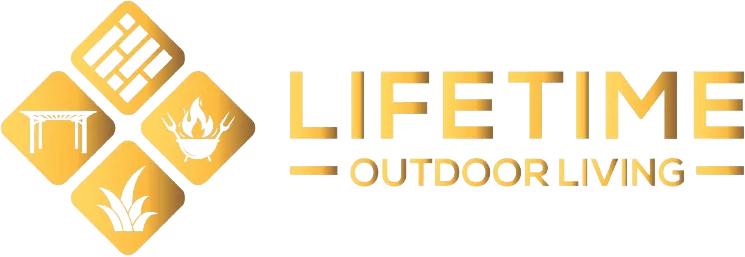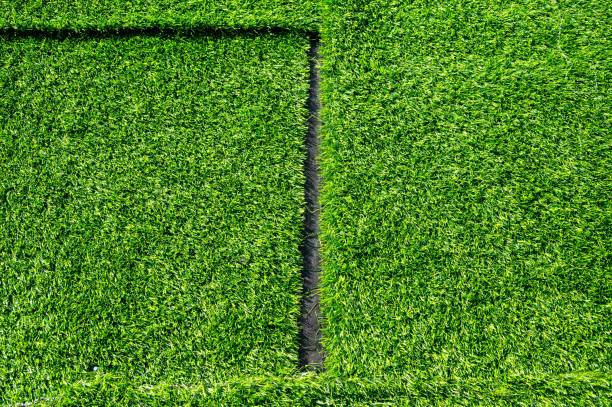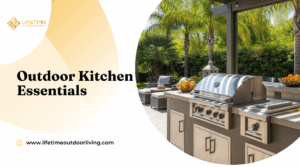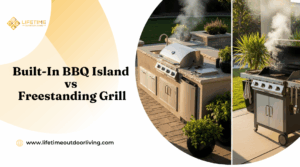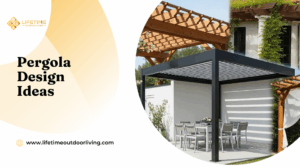Top Lawn Turf Alternatives: Transform Your Orange County Yard into a Sustainable Paradise
Are you looking to replace your traditional lawn with modern turf alternatives? As Orange County faces ongoing drought conditions and water restrictions, many homeowners are discovering innovative turf alternative solutions that beautify their properties while conserving precious resources. Let’s explore the best options for transforming your yard into a sustainable, low-maintenance paradise.
Why Consider Turf Alternatives for Your Orange County Property?
Best Turf Alternative Options for Southern California Climate
The traditional green lawn, once a symbol of the American Dream, is evolving. Orange County homeowners are increasingly seeking turf alternatives that align with California’s climate-conscious future. These alternatives not only reduce water consumption but also minimize maintenance needs while maintaining property values.
Best Turf Alternative Options for Southern California Climate
Native Ground Covers
California’s native plants offer excellent turf alternatives that thrive in our Mediterranean climate. Consider these options:
- Carex pansa (California meadow sedge)
- Dymondia margaretae (Silver carpet)
- Myoporum parvifolium (Creeping myoporum)
These plants require minimal irrigation once established and provide year-round ground coverage.
Drought-Resistant Mediterranean Plants
Mediterranean plants make perfect turf alternatives for Orange County yards:
- Rosemary (prostrate varieties)
- Thyme
- Lavender
- Sage varieties
These aromatic options add both beauty and functionality to your landscape.
Artificial Turf as a Modern Turf Alternative
While not everyone’s first choice, synthetic turf alternatives have come a long way in recent years. Modern artificial turf offers:
- Realistic appearance and texture
- Excellent drainage capabilities
- UV resistance for long-term durability
- Pet-friendly options
- 15-20 year lifespan
Cost Considerations for Artificial Turf Alternative Installation
Initial installation costs range from $8-12 per square foot in Orange County, but long-term savings include:
- Eliminated water bills for irrigation
- No mowing or maintenance equipment needed
- Reduced landscape service costs
Hardscape and Xeriscape Turf Alternatives
Decomposed Granite and Gravel Options
These turf alternatives provide excellent drainage and require minimal maintenance:
- California Gold decomposed granite
- Mexican pebbles
- River rock
- Crushed stone
Pavers and Concrete Solutions
Incorporating hardscape elements as turf alternatives can create functional outdoor living spaces:
- Permeable pavers
- Stamped concrete
- Flagstone
- Contemporary concrete designs
Native Garden Beds as Turf Alternatives
Creating native garden beds offers one of the most environmentally friendly turf alternative solutions:
- Attracts local wildlife and pollinators
- Requires minimal water once established
- Provides seasonal interest
- Reduces carbon footprint
Popular Native Plants for Orange County Gardens
- California poppy
- Monkey flower
- Coast sunflower
- White sage
- Cleveland sage
Water-Wise Design Strategies for Turf Alternative Landscapes
Proper Installation Techniques
Success with turf alternatives depends on proper installation:
- Soil preparation and amendment
- Efficient irrigation system design
- Proper plant spacing
- Effective weed barrier installation
Maintenance Requirements for Different Turf Alternatives
Understanding maintenance needs helps choose the right option:
- Monthly trimming for ground covers
- Seasonal pruning for native plants
- Annual refreshing for gravel areas
- Minimal upkeep for artificial turf
Environmental Benefits of Switching to Turf Alternatives
Water Conservation
Replacing traditional lawns with turf alternatives can reduce water usage by:
- 50-75% with native plants
- 100% with artificial turf or hardscape
- 60-80% with Mediterranean plants
Reduced Carbon Footprint
Turf alternatives help the environment by:
- Eliminating gas-powered lawn equipment needs
- Reducing chemical fertilizer use
- Supporting local ecosystems
Local Regulations and Incentives
Orange County Turf Removal Programs
Many local water districts offer incentives:
- Municipal Water District of Orange County rebates
- Local city-specific programs
- State-level water conservation rebates
Permit Requirements
Before installing turf alternatives, check:
- Local HOA regulations
- City permit requirements
- Water district guidelines
Making the Transition: Steps to Replace Your Lawn
Planning Your Turf Alternative Project
- Assess your yard’s conditions
- Set your budget
- Choose appropriate alternatives
- Design your new landscape
- Select qualified contractors
Timeline and Seasonal Considerations
Best times for installation in Orange County:
- Fall: Ideal for native plant installation
- Winter: Perfect for hardscape projects
- Spring: Good for artificial turf installation
- Avoid summer installations when possible
Maintaining Property Value with Turf Alternatives
Curb Appeal Considerations
Choose turf alternatives that:
- Complement your home’s architecture
- Provide year-round visual interest
- Create defined spaces
- Include flowering plants for color
Professional vs. DIY Installation
Consider these factors:
- Project scope and complexity
- Available time and expertise
- Budget constraints
- Long-term maintenance plans
Conclusion: Embracing Modern Turf Alternatives
As Orange County continues to face climate challenges, choosing the right turf alternative becomes increasingly important. Whether you opt for native plants, artificial turf, or a combination of solutions, the switch from traditional lawns to sustainable alternatives offers numerous benefits for homeowners and the environment alike.
Ready to transform your yard? Contact local landscape
hile not everyone’s first choice, synthetic turf alternatives have come a long way in recent years. Modern artificial turf offers:
- Realistic appearance and texture
- Excellent drainage capabilities
- UV resistance for long-term durability
- Pet-friendly options
- 15-20 year lifespan
Cost Considerations for Artificial Turf Alternative Installation
Initial installation costs range from $8-12 per square foot in Orange County, but long-term savings include:
- Eliminated water bills for irrigation
- No mowing or maintenance equipment needed
- Reduced landscape service costs
Hardscape and Xeriscape Turf Alternatives
Decomposed Granite and Gravel Options
These turf alternatives provide excellent drainage and require minimal maintenance:
- California Gold decomposed granite
- Mexican pebbles
- River rock
- Crushed stone
Pavers and Concrete Solutions
Incorporating hardscape elements as turf alternatives can create functional outdoor living spaces:
- Permeable pavers
- Stamped concrete
- Flagstone
- Contemporary concrete designs
Native Garden Beds as Turf Alternatives
Creating native garden beds offers one of the most environmentally friendly turf alternative solutions:
- Attracts local wildlife and pollinators
- Requires minimal water once established
- Provides seasonal interest
- Reduces carbon footprint
Popular Native Plants for Orange County Gardens
- California poppy
- Monkey flower
- Coast sunflower
- White sage
- Cleveland sage
Water-Wise Design Strategies for Turf Alternative Landscapes
Proper Installation Techniques
Success with turf alternatives depends on proper installation:
- Soil preparation and amendment
- Efficient irrigation system design
- Proper plant spacing
- Effective weed barrier installation
Maintenance Requirements for Different Turf Alternatives
Understanding maintenance needs helps choose the right option:
- Monthly trimming for ground covers
- Seasonal pruning for native plants
- Annual refreshing for gravel areas
- Minimal upkeep for artificial turf
Environmental Benefits of Switching to Turf Alternatives
Water Conservation
Replacing traditional lawns with turf alternatives can reduce water usage by:
- 50-75% with native plants
- 100% with artificial turf or hardscape
- 60-80% with Mediterranean plants
Reduced Carbon Footprint
Turf alternatives help the environment by:
- Eliminating gas-powered lawn equipment needs
- Reducing chemical fertilizer use
- Supporting local ecosystems
Local Regulations and Incentives
Orange County Turf Removal Programs
Many local water districts offer incentives:
- Municipal Water District of Orange County rebates
- Local city-specific programs
- State-level water conservation rebates
Permit Requirements
Before installing turf alternatives, check:
- Local HOA regulations
- City permit requirements
- Water district guidelines
Making the Transition: Steps to Replace Your Lawn
Planning Your Turf Alternative Project
- Assess your yard’s conditions
- Set your budget
- Choose appropriate alternatives
- Design your new landscape
- Select qualified contractors
Timeline and Seasonal Considerations
Best times for installation in Orange County:
- Fall: Ideal for native plant installation
- Winter: Perfect for hardscape projects
- Spring: Good for artificial turf installation
- Avoid summer installations when possible
Maintaining Property Value with Turf Alternatives
Curb Appeal Considerations
Choose turf alternatives that:
- Complement your home’s architecture
- Provide year-round visual interest
- Create defined spaces
- Include flowering plants for color
Professional vs. DIY Installation
Consider these factors:
- Project scope and complexity
- Available time and expertise
- Budget constraints
- Long-term maintenance plans
Conclusion: Embracing Modern Turf Alternatives
As Orange County continues to face climate challenges, choosing the right turf alternative becomes increasingly important. Whether you opt for native plants, artificial turf, or a combination of solutions, the switch from traditional lawns to sustainable alternatives offers numerous benefits for homeowners and the environment alike.
Ready to transform your yard? Contact local landscape professionals who specialize in turf alternatives to discuss your options and create a custom p
Key environmental factors impacting turf longevity:
- Climate adaptation
- Soil composition
- Rainfall patterns
- Temperature extremes
- Sunlight exposure
- Air quality
- Local wildlife impact
Usage Patterns
Understanding usage impact on durability:
- Foot traffic levels
- Sports activities
- Pet presence
- Vehicle traffic
- Entertainment areas
- Children’s play areas
- Maintenance equipment
Installation Methods for Maximum Durability
Professional Installation Techniques
Proper installation practices:
- Soil preparation
- Drainage systems
- Root zone development
- Proper leveling
- Timing considerations
- Edge securing
- Initial care procedures
DIY Installation Guidelines
Essential steps for successful installation:
- Site evaluation
- Ground preparation
- Soil testing
- Proper grading
- Timing selection
- Watering systems
- Post-installation care
Maintenance for Long-Term Durability
Regular Maintenance Schedule
Essential maintenance practices:
- Mowing frequency
- Watering schedules
- Fertilization timing
- Aeration needs
- Overseeding requirements
- Pest management
- Disease prevention
Seasonal Care Requirements
Seasonal maintenance considerations:
- Spring preparation
- Summer heat management
- Fall winterization
- Winter protection
- Growth cycle adjustments
- Stress management
- Recovery periods
Durability Testing and Quality Indicators
Professional Assessment Methods
Quality evaluation criteria:
- Density measurements
- Root depth analysis
- Wear resistance testing
- Recovery rate evaluation
- Disease resistance checking
- Drought tolerance assessment
- Traffic tolerance testing
Consumer Testing Guidelines
DIY evaluation techniques:
- Visual inspection methods
- Physical testing procedures
- Growth pattern analysis
- Color consistency checks
- Texture evaluation
- Thickness measurement
- Root system examination
Cost vs. Durability Analysis
Initial Investment Considerations
Cost factors affecting durability:
- Material quality
- Installation method
- Site preparation
- Professional services
- Warranty coverage
- Additional features
- Long-term maintenance
Long-Term Value Assessment
Value considerations over time:
- Lifespan expectations
- Maintenance costs
- Replacement needs
- Property value impact
- Water savings
- Environmental benefits
- Aesthetic longevity
